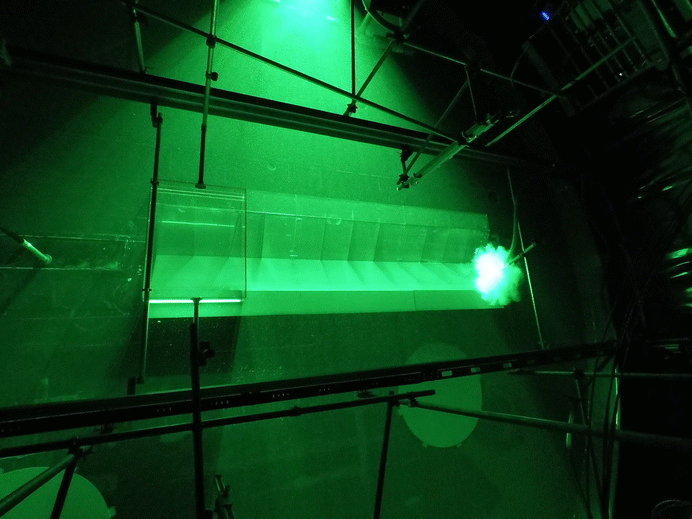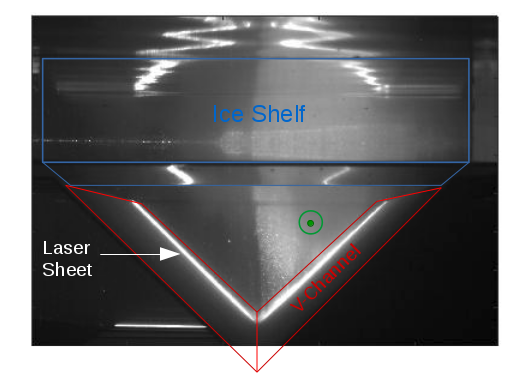This week we have started new experiments that use a V-shaped channel sloping down towards an ice shelf front. More than a whole week was used to remove the topography for the shelf break experiments and to build up a new topography, readjust the cameras and set up the lasers.
After some days of experiments, you will finally get to see some first time lapse videos of the current flowing towards the ice shelf! In these experiments, we want to find out how the current behaves as it reaches the ice shelf front. How much of the water gets blocked as it reaches the ice front that corresponds to a large step in water thickness? Does the water manage to flow underneath the ice shelf? In which direction does it go when it gets blocked? And what is happening inside the ice shelf cavity? As in the previous experiments, we are using a barotropic current (no density difference between the inflowing and the ambient water) and compare it to a baroclinic current (denser inflowing water than the ambient water).

One of the cameras is installed on the left side of the above gif about 10m behind the ice shelf. It looks into the channel facing the source. With this camera, we are able to observe if the current is barotropic or not.

You may think that it sounds very easy to produce a barotropic flow – we just need to use the same water for the inflow as for the water inside the tank. But in reality it turns out that the current is very sensitive to small density differences and the inflowing water easily gets buoyant as it is stored under the roof of the rotating platform! However, a higher rotation speed seems to reduce the sensitivity to the density difference!

2 thoughts on “First impression of the ice shelf experiments”
Comments are closed.